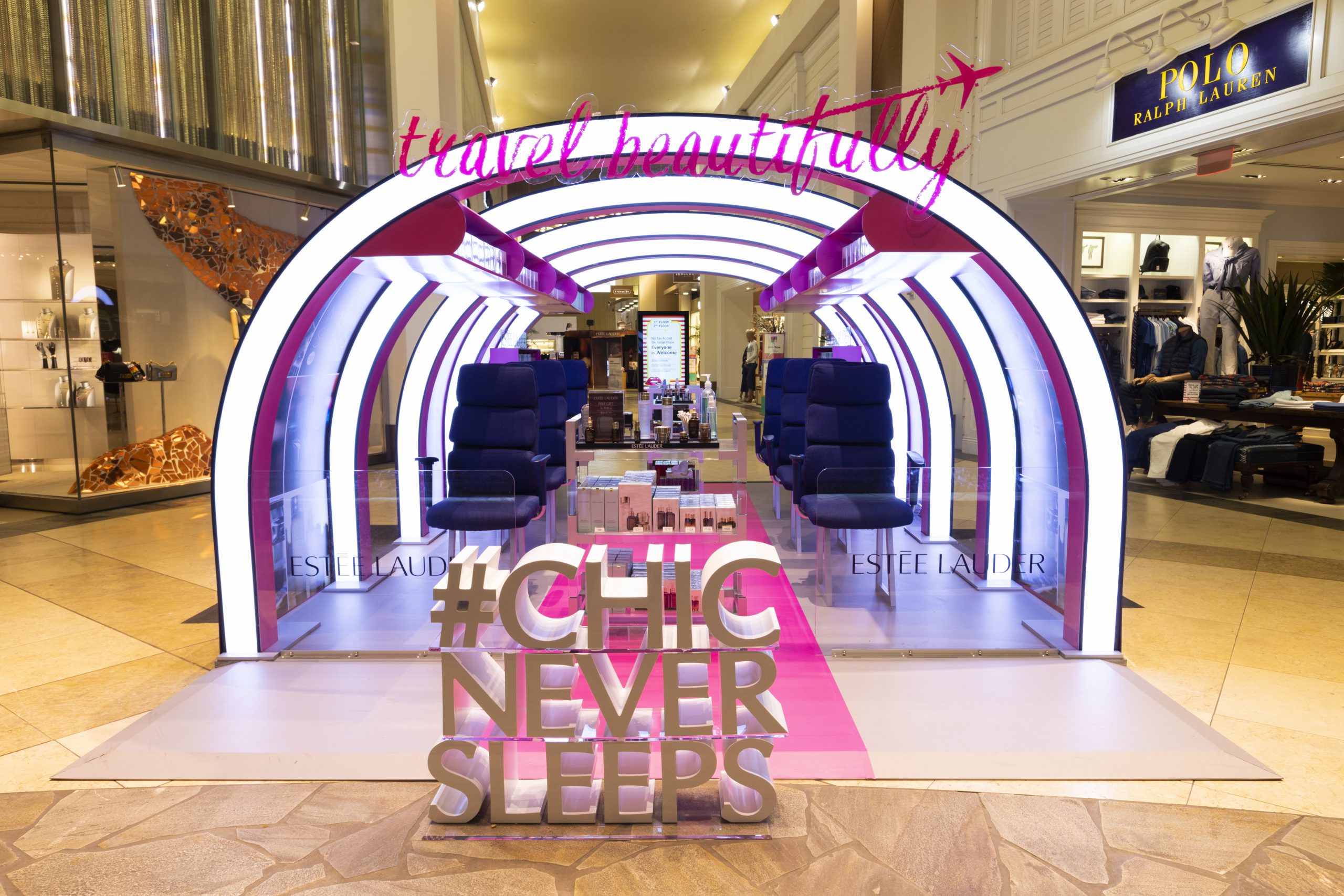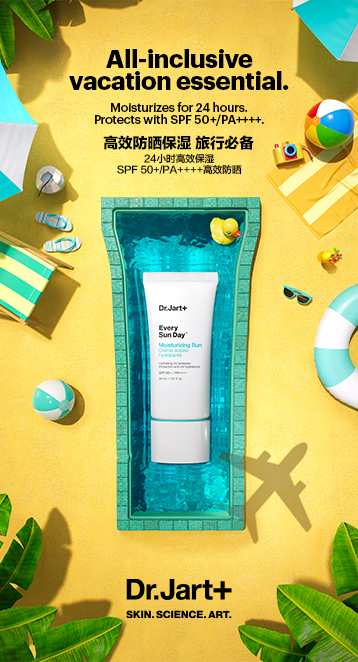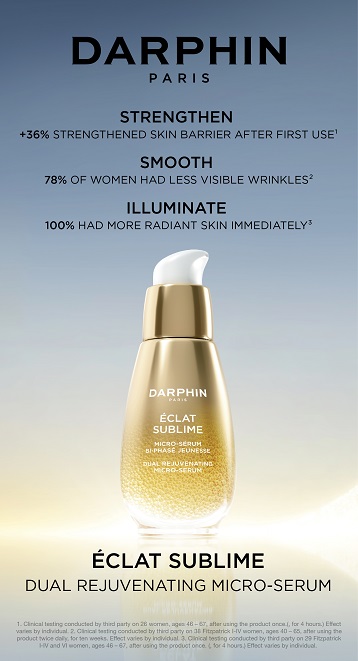
Travel retail was among the top growth drivers cited by The Estée Lauder Companies as it reported strong financial results for its first quarter ended September 30, 2018.
The beauty house posted a +8% year-on-year increase in net sales for the quarter, to US$3.52 billion.
Excluding the impact of currency translation and the adoption of a new revenue recognition accounting standard (ASC 606), Estée Lauder said net sales increased +11% as it reported growth in nearly all product categories, geographic regions and channels.
Net earnings rose +17% to US$500 million while diluted net earnings per common share increased +17% to U$1.34.
“Our fiscal year is off to an excellent start,” said The Estée Lauder Companies President and Chief Executive Officer Fabrizio Freda. “Our sales and earnings per share grew double-digits, reflecting multiple engines of global growth throughout our product categories, brands, regions and channels.
“Our creative innovations and high-quality products resonated strongly. We attracted new consumers and increased engagement with existing ones through successful digital advertising and influencer activities.
“Our top growth drivers were skincare globally, the Asia Pacific region and emerging markets, the global online and travel retail channels, and most brands, including Estée Lauder, MAC, La Mer, Tom Ford and Origins.”
Freda said the company was raising its earnings per share guidance for the year, given the first quarter results and “exciting upcoming launches and programmes”.

He noted: “We are operating in a challenging macro environment with many economic and geopolitical risks, but we are confident in the strength of our business strategy, the quality of our products, the desirability of our brands and our ability to execute with discipline and agility.”
The Estée Lauder Companies said that it expected “future moderation” of net sales growth in travel retail, which it had “not experienced to date”. This outlook reflects the current geopolitical and economic risks, the company said.
Q1 PERFORMANCE BY CATEGORY
All references to travel retail highlighted in bold.
Skincare
- The adoption of ASC 606 reduced reported net sales growth by US$40 million (-3%) and reduced operating income growth by US$25 million (-8%).
- Skincare net sales grew across most geographies, channels and brands, particularly in Asia, travel retail and online.
- Growth at La Mer was broad-based, the company noted, with net sales increasing across every region and channel. This was driven by higher net sales of existing products, incremental net sales from new product launches, and expanded targeted consumer reach.
- Growth at the Estée Lauder brand was driven by new innovative launches, the company said.
- Operating income increased sharply, primarily from La Mer and Estée Lauder, reflecting higher net sales.

Make-up
- The adoption of ASC 606 reduced reported net sales growth by US$17 million (-1%) and reduced operating income growth by US$4 million (-2%).
- Growth in make-up was primarily driven by strong increases from MAC, Estée Lauder and Tom Ford Beauty. These increases were partially offset by lower net sales for Clinique and Smashbox.
- MAC grew high single-digits, driven by several launches.
- Estée Lauder generated double-digit growth, driven by strength from its Double Wear line of products.
- Net sales from Tom Ford Beauty increased by double-digits, primarily driven by its lip colour and eye shadow franchises.
- Make-up operating income declined, reflecting lower net sales at Smashbox and planned investments at Too Faced to support new and existing products, as well as international expansion. This decline was partially offset by increases at MAC and Estée Lauder, primarily due to higher net sales.
Fragrance
- The adoption of ASC 606 reduced reported net sales growth by US$9 million (-2%) and reduced operating income by US$3 million (-3%).
- Net sales increased excluding the adoption of ASC 606 and unfavourable currency translation, reflecting growth at Tom Ford Beauty, Le Labo, By Kilian and Jo Malone London, which was mostly offset by lower sales of certain designer fragrances.
- Increased net sales from Tom Ford Beauty reflected the “continued success” of Private Blend fragrances and the launch of Ombre Leather. Jo Malone London’s net sales increase primarily reflected the launch of Honeysuckle & Davana and expanded targeted consumer reach, including the brand’s opening on Tmall in China.
- Le Labo and By Kilian net sales benefitted from expanded targeted consumer reach. By Kilian’s growth was also driven by new launches.
- Fragrance operating income declined, reflecting timing of shipments and investments in advertising to support certain designer fragrance launches.

Haircare
- Haircare net sales increased, primarily reflecting higher net sales from Aveda, due to continued growth from the Invati Advanced line of products and the launch of Cherry Almond Softening Shampoo and Conditioner.
- Haircare operating income declined, as higher results from Aveda were more than offset by advertising investments to support launches in Bumble and bumble’s Thickening franchise.
Q1 PERFORMANCE BY MARKET
The Americas
- The adoption of ASC 606 reduced reported net sales growth by US$60 million (-5%) and reduced operating income by US$23 million (-23%). The unfavourable impact of foreign currency translation reduced reported net sales by -1%.
- Net sales in The Americas region declined -2%, excluding the impacts from the adoption of ASC 606 and currency translation.
- Bon-Ton stores contributed US$27 million in net sales in the prior year quarter. Excluding this impact, as well as the impacts from ASC 606 and currency translation, The Americas was relatively flat and North America grew slightly.
- Net sales grew double-digits in online and high single-digit in speciality-multi in North America, and the company’s department store business improved sequentially.
- Operating income in The Americas decreased, primarily reflecting the impact of the accounting change, strategic investments at Too Faced, slightly lower sales in the region and investments in technology.

Europe, the Middle East and Africa
- The adoption of ASC 606 increased reported net sales growth by US$8 million (less than -1%) and increased operating income growth by US$8 million (-2%). The unfavourable impact of foreign currency translation reduced reported net sales growth by -2%.
- The company generated strong net sales growth in the region both on a reported basis and in constant currency, primarily due to strong double-digit net sales growth in travel retail and emerging markets, led by the Middle East and India. This growth was partially offset by lower net sales in the UK.
- Most emerging markets in the region grew, and half of them delivered double-digit increases. Middle East growth was primarily driven by MAC.
- In travel retail, strong double-digit sales growth was broad-based across brands, led by Estée Lauder, La Mer, MAC and Tom Ford. Growth was also realised across many geographies and reflected “increases in international passenger traffic, strong innovation and expanded targeted consumer reach”, the company said.
- Lower net sales in the UK were impacted by reduced consumer confidence ahead of Brexit, House of Fraser door closures and lower traffic across brick-and-mortar stores that was only partially offset by higher online net sales.
- Operating income increased, primarily due to strong double-digit growth in travel retail and, to a lesser extent, many countries throughout the region partially offset by lower results in the UK.

Asia Pacific
- The adoption of ASC 606 reduced reported net sales growth by US$15 million (-2%) and reduced operating income growth by US$16 million (-10%). The unfavourable impact of foreign currency translation reduced reported net sales by -2%.
- The company said it delivered another quarter of strong double-digit net sales increases in Asia Pacific on a reported basis and in constant currency. This represents its third largest quarterly growth rate in the region on a constant currency basis in the last 20 years.
- The growth was broad-based, with most markets growing double-digits. China and Japan accelerated while Hong Kong continued its strong growth.
- The company generated double-digit net sales growth in virtually every major product category and channel.
- Operating income increased, primarily due to higher net sales, as well as cost benefits associated with favourable channel mix and better leverage of fixed costs.








